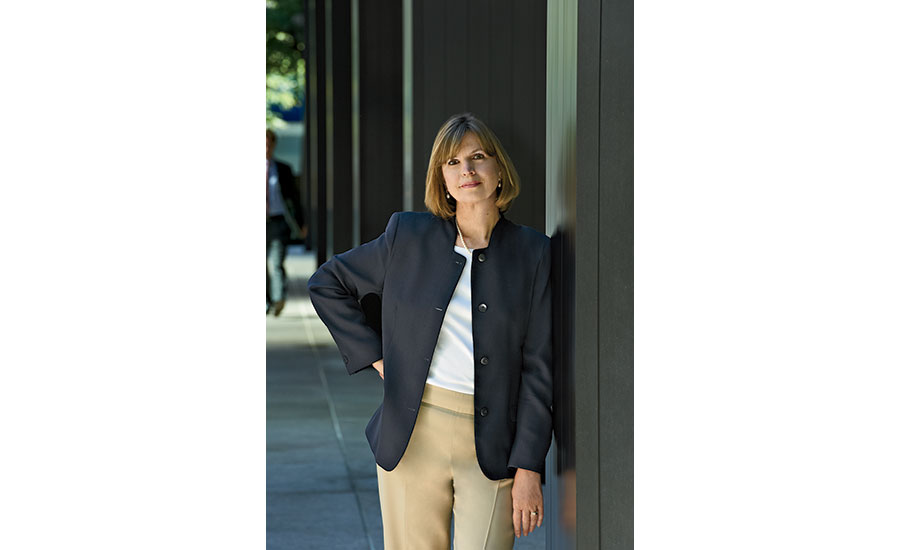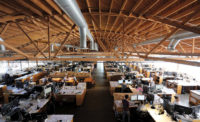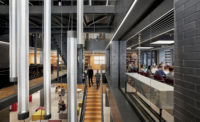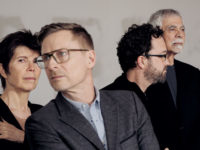What a great time to be an architect: the economy, despite occasional bumps, has been strong; billings are solid; net revenues have returned to the same levels as before the Great Recession; firms are busy, and many are expanding.
But underneath that rosy picture are uncertainties and a sense of unease. The rapid evolution of technology continues to threaten the bread-and-butter of traditional practice. Revenues may be stable, but fees have not rebounded to pre-recession times. Competition for jobs is fierce, with firms' undercutting each other on pricing. Clients expect more service but don’t necessarily pay for it. And another kind of competitor looms on the horizon: big start-ups like WeWork and Katerra are encroaching on the business of design practices—and luring young architects with salaries beyond what most firms can pay. WeWork has more than 700 designers on staff and has just brought in Bjarke Ingels, founder of BIG, as chief architect. Katerra, which is revolutionizing the delivery system of buildings, from architecture through finished construction, recently raised almost $1 billion from one investment fund and recently announced the acquisition of a design firm. “Architects have to wake up before architecture is taken away from us,” says Tomas Rossant, a partner at Ennead in New York.
For this special issue of RECORD, we took a CT scan of practice today: the magazine’s reporters examined firms across the country of varied sizes, from Small to Extra Large. What we found among the architects we interviewed was deep devotion to their work, a strong idealism about design’s ability to make the world a better place, and a powerful belief that architectural thinking is essential and can never be replaced by machines. But those positive attitudes were tempered by real concerns.
Small practices (77 percent of U.S. firms are nine people or fewer, but we used 25 and fewer as our criterion) showed they are nimble, foster close client relationships, and know how to be inventive on tight budgets. They also struggle with finances and fear the next, inevitable economic downturn. Midsize firms (from 25 people to 100) tend to have more diverse project portfolios yet also develop bench strength in certain building types; they are sized to take on a lot but feel competitive pressure from both small and large practices. And both Medium firms and their Large cousins (100–600 people) are vulnerable to takeovers from Extra Large practices. Those XL firms (600 people and up) have multiple offices in the U.S. and abroad, but even as they expand globally, they stay focused on the various local contexts where they are based, and bring a wide range of services and adaptability to their practices. Of course, they—and many of their large-firm counterparts—have heard the drumbeats of change and are scrambling to adapt to evolving technologies and the growing needs of clients and communities, especially around issues like climate change. A number of practices have created branches that are engaged in research and in developing their own digital tools.
Architects have always innovated—in structures, materials, and design and construction processes. But the speed of change today is calling for not just innovation but a disruption of conventional practice. On the business end alone, offices are likely to fail if architects don’t figure out how to alter their value proposition, argues Phil Bernstein, associate dean at the Yale School of Architecture, who teaches professional practice. Meanwhile, a number of firms—including KieranTimberlake, Ennead, NBBJ, and SOM—are leading the way in redefining what an architectural practice can be, and, in this issue, we explore their strategies as disruptors of tradition.
While the profession must evolve along with technology, design thinking remains the unique tool that architects bring to everything they touch—not only to their own projects and the way they operate their practices but to the creative ideas they can bring to urgent problems. “The architectural voice can become instrumental in the many political and cultural conversations that are affecting the world today— climate change, health, education, food, and the state of the city, to name a few,” says Nader Tehrani, a founder of NADAAA and the dean of architecture at Cooper Union. Architectural practice may be at a deflection point, but architects have never been so critical to the future.









Post a comment to this article
Report Abusive Comment